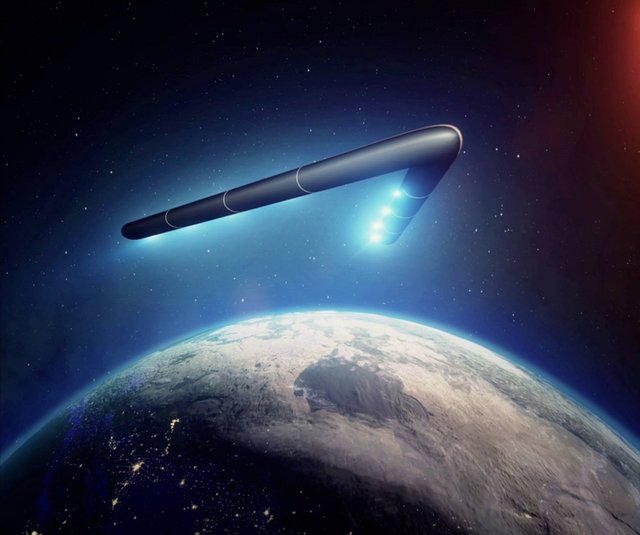
Frequenters of my blog will already know about my love affair with airships. But while most think of them as a charming relic of the past, they may well be not only the future of air travel, but of space travel as well. "A wiggity-wiggity-whaaaaat??" you say. But it's true!
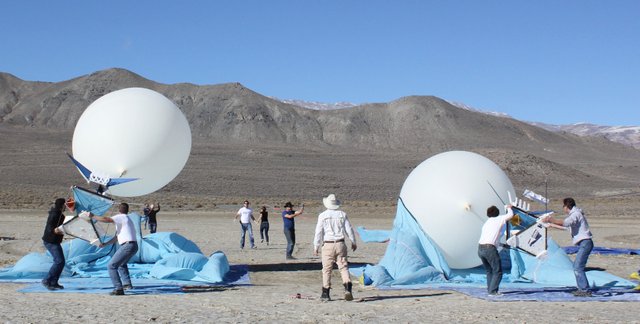
JP Aerospace was founded in 1999 by John Marchel Powell, known as "JP", as well as Michael Stucky and Scott Mayo. Their first attempt at suborbital flight using a rocket launched from a balloon was a failure. But the concept is so promising, naturally they didn't stop there and are still at it today.
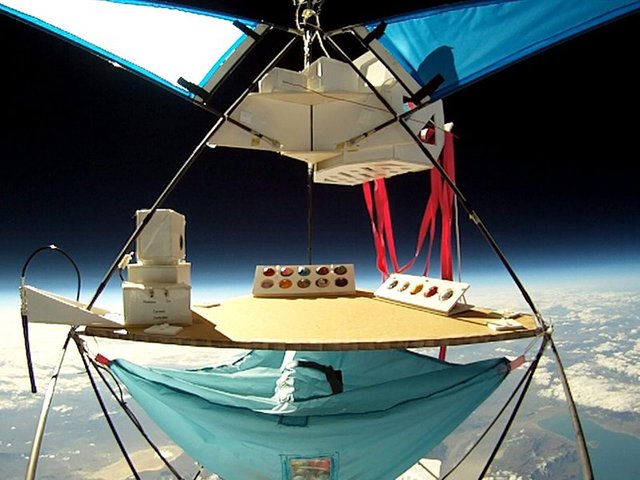
JP Aerospace frequently sends balloons with scientific payloads to the edge of space, including student projects like pongsats. Pongsats are ping pong ball sized micro satellites which do not enter orbit, but carry out their own dedicated little experiment from the balloon at a near-space altitude.
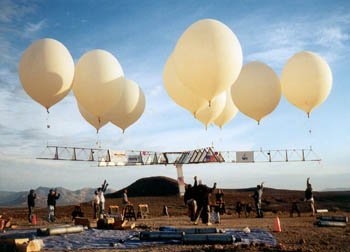
That's just the educational outreach stuff though. While that's a laudable goal in its own right, JP Aerospace ultimately wants to reach orbit. That requires nothing less than lifting a launchpad and rocket, via helium balloons, to the edge of space where the rocket will be launched. This saves tremendously on fuel.
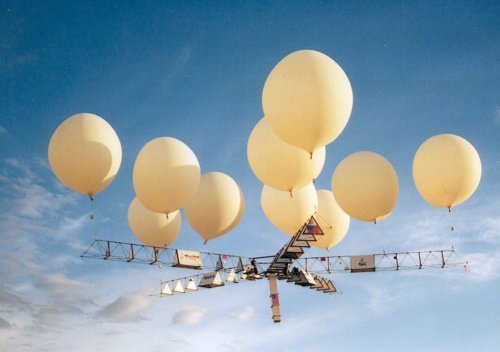
The "Dark Sky Station" model proved the stability of their starfish configuration. The final version, seen below, will not be suspended from conventional weather balloons. Rather the entire thing will be one huge starfish shaped gas bag providing the lift and stability needed for safe rocket launches.

This is no fantasy, or fever dream. JP Aerospace is hard at work on their "Ascender", a more modest V-shaped airship which utilizes the same construction methods as Dark Sky Station, but will itself be propelled into suborbital space by attached rocket boosters. The gas bag is for the most part complete:
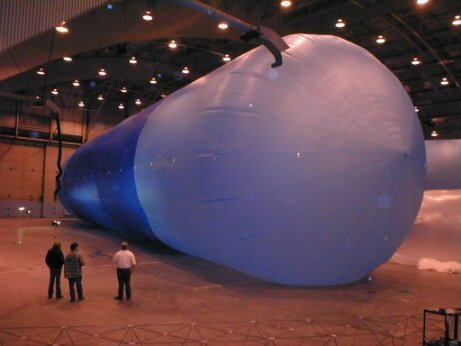
What's more, the Ascender will be manned. Just a single occupant mind you, the pilot, but that's a huge step forward for a near-space program which has until now exclusively sent up unmanned payloads. It represents the crossing of a threshold in many ways, as now a human life is at stake.
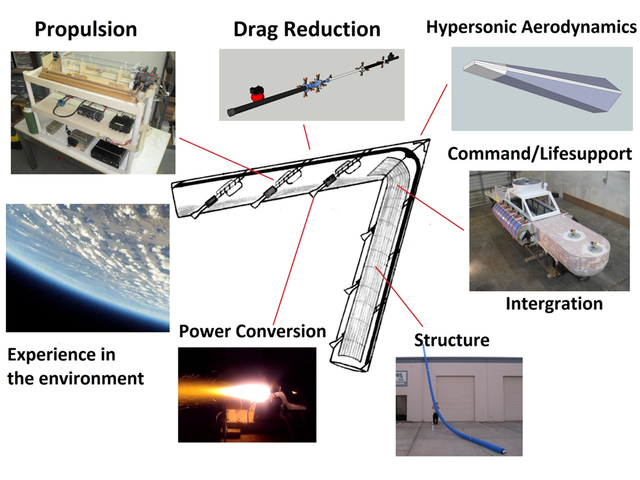
The pilot cabin has already been built. Looking something like a submersible but with big, flat windows (as the pressure differential at the target altitude is not sufficient for that to be a problem) it carries O2 bottles and CO2 absorbant well in excess of what will be needed for the duration of the mission, as is standard practice for life critical systems on spacecraft.
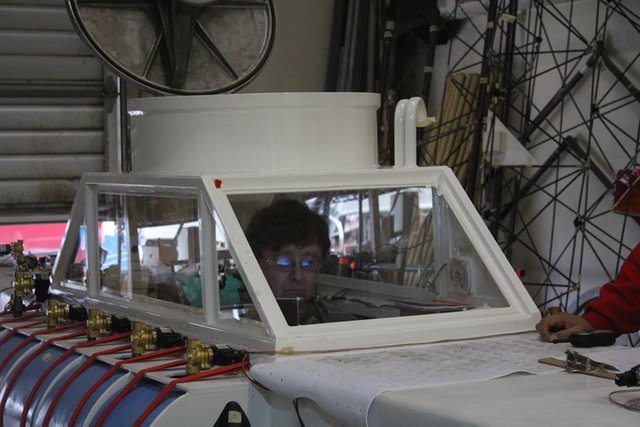
It's a big question mark whether JP Aerospace will succeed in this endeavor. But if so, it will mark a historic occasion. Unlike SpaceX, JP Aerospace isn't receiving NASA contracts. It's making due with a shoestring budget. It's got that adventurous, "anything can happen" feeling of a couple of brilliant guys in a workshop building what may very well be the future of space travel.
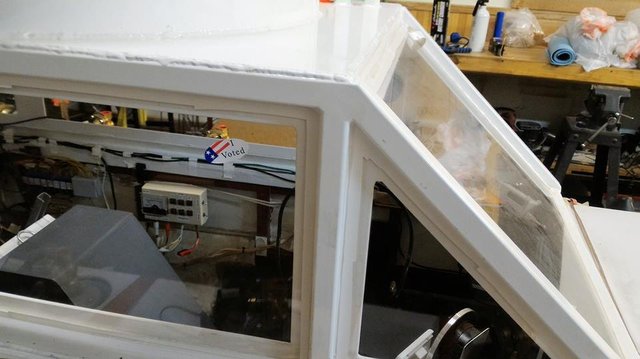
If they succeed, future generations may look back on the early days of JP Aerospace in much the same way that we now look back on the Gemini program. Meanwhile astronauts, possibly civilians as well, will be making routine flights to orbit aboard rocket propelled airships, while satellites are launched from high altitude floating platforms the likes of which can scarcely be envisioned today.
Zefram Cochrane would be proud!

Downvoting a post can decrease pending rewards and make it less visible. Common reasons:
Submit
Yeah, float it up into orbit with passengers and payload. Then have it dock with the propulsion ship in space to blast away to wherever you want to go!
Downvoting a post can decrease pending rewards and make it less visible. Common reasons:
Submit
Excellent!
I've been following JPAerospace ever chance I got since I found out about it a few years ago. I particularly like the idea of "dark sky station". Why not make cities, or small towns, that float?
Couple this idea with an inertial transfer orbital tether and chemical rockets won't even be needed.
Downvoting a post can decrease pending rewards and make it less visible. Common reasons:
Submit
Indeed, I've written about feasible plans for floating cities in the past.
Downvoting a post can decrease pending rewards and make it less visible. Common reasons:
Submit
Helium is scarce and becoming moreso. It's price will do nothing but go up.
Not a thing wrong with using Hydrogen.
LOTS cheaper.
Downvoting a post can decrease pending rewards and make it less visible. Common reasons:
Submit
I should have said 'momentum transfer"
Downvoting a post can decrease pending rewards and make it less visible. Common reasons:
Submit
Downvoting a post can decrease pending rewards and make it less visible. Common reasons:
Submit
Rockcoon?
Downvoting a post can decrease pending rewards and make it less visible. Common reasons:
Submit
I figured by your title that you were trying to achieve buoyancy in a vacuum and was hot to say that it isn't possible! I've fantasized about sending things into space off of helium balloons before. The way I'd do it is with a torus shaped balloon and a big elastic band that shoots the objects through the donuts hole! (no need for rocket power for this guy)
Downvoting a post can decrease pending rewards and make it less visible. Common reasons:
Submit